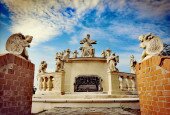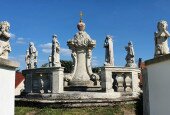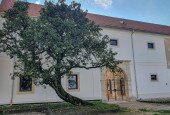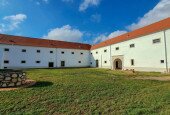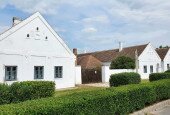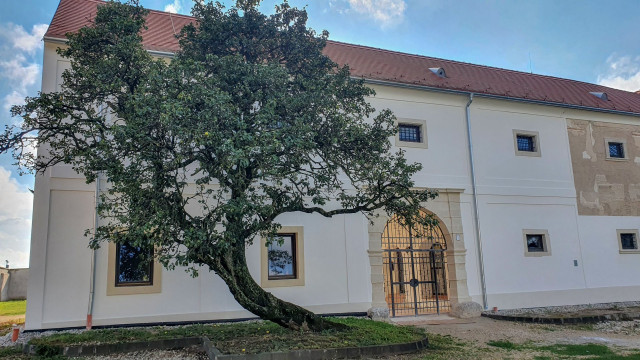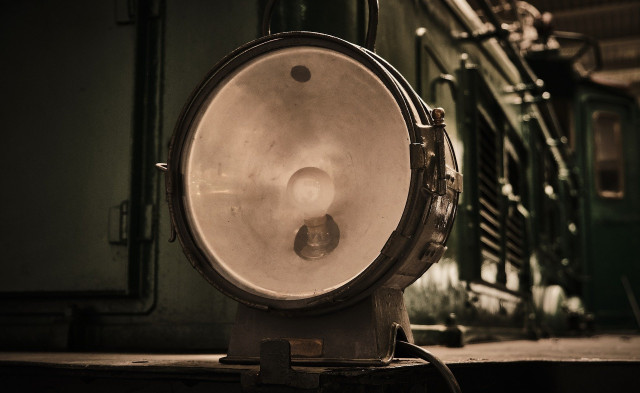Fertőszéplak
Fertőszéplak is located where the Kisalföld and the eastern extension of the Alps meet. The village was built on four hills: the Halom Hill, Lóránt Hill, Templom Hill and the Eresztén Hill. The village changed hands many times. Its oldest owner was the Osl family. In the 13th and 14th centuries, Széplak was known as a landlord's customs collection place. Its most notable owners were King Sigismund, the Török family of Enying, the Nádasdys, the Esterházys and the Széchényi family. In 1682, Archbishop György Széchényi took the palace from Pál Esterházy as pledge along with the lands and manors that belonged to it. Thus Széplak became the home of the Széchényi family for almost a century.
The village of Jakabfalva was on the site of Fertőszéplak in the Middle Ages. It was one of the six villages that have since disappeared due to water level fluctuations of Lake Fertő. There was a legend about the St. Jakab's Monastery even as early as in the Carolingian times. The people of Fertőszéplak found two bells of the old church of Jakabfalva in the bed of Lake Fertő, the larger one that was turned out of the mud by a bull's horn is now in the tower of the Church of the Holy Spirit.
Attractions:
Széchényi Palace: The palace opposite the Baroque Calvary plays a prominent role in the history of the Széchényi family. Captain György Széchény (II), to whom King Lipót I of Hungary bestowed the title of Count died in this palace, and Ferenc Széchényi, the founder of the National Museum and the father of Count István Széchenyi was born here. After the family moved the estate centre to Cenk, the condition of the palace building deteriorated. In the renovated palace from the spring of 2021, the new World Heritage Visitor Centre of the Fertő area, the Peisonia Visitor Centre awaits visitors, presenting the unique values of the region.
The "Széchényis’ pear tree": The "Széchényi’s pear tree" is located in the centre of the former estate of the Széchényi family, right at the palace. In 2019 the 130-year-old pear tree became the third at the “Tree of the Year” competition announced by the Ökotárs Foundation.
All Saints Church: In the middle of the village there was a church as early as around 1250. It was here that the foundation stone of today's church was laid by Captain György Széchényi (II) in 1728. The original baroque interior of the church is especially valuable.
Calvaries: The two Baroque Calvaries in front of the palace, the Holy Tomb, the Calvary of the Holy Cross and the Church of All Saints form the so called named triple mound of Széplak.
Country house: The ethnographic traditions, furnishings of the village, the inhabitants’ way of life are presented in the Village Museum; the remaining five houses of Öreg utca (Old Street) were furbished by the Sopron Museum in 1982. The beautiful, coherent, jagged street line is a masterpiece of the folk architecture of the Kisalföld region.
Museum of Railway Lamps: Visitors are welcome to have a look at József Haragovics’s private collection of railway lamps exhibited in a cottage with veranda built at the beginning of the last century, in Fertőszéplak.
Templomdomb (Church Hill) walking trails: The Fertőszéplak church hill has undergone a complete reconstruction. Walkways, rest areas, a drinking fountain and thousands of plants were installed along the Templomdob walking trails.
Truncated tower: West of the village in the direction of Hegykő you can find the Eresztén hill. In the small forest next to the B10 cycle path there is a broken black granite column. The broken column symbolizes the broken life of Countess Margit Cziráky, the wife of Miklós Esterházy IV, who died at the age of 37 at the birth of her fifth child. The monument was erected by the officers of the Esterházy estate to the countess, who was extremely popular in the area.
LÁTKÉP Open-air Gallery: In 2011 the LÁTKÉP Open-air Gallery was established in the centre of Fertőszéplak under the care of the Fertőszéplak Community Centre. Once a year the exhibition opens with weatherproof copies of new works that visitors can see throughout the year.



